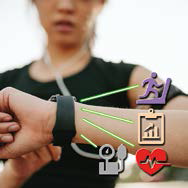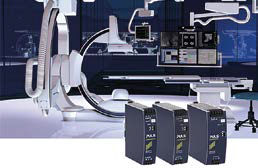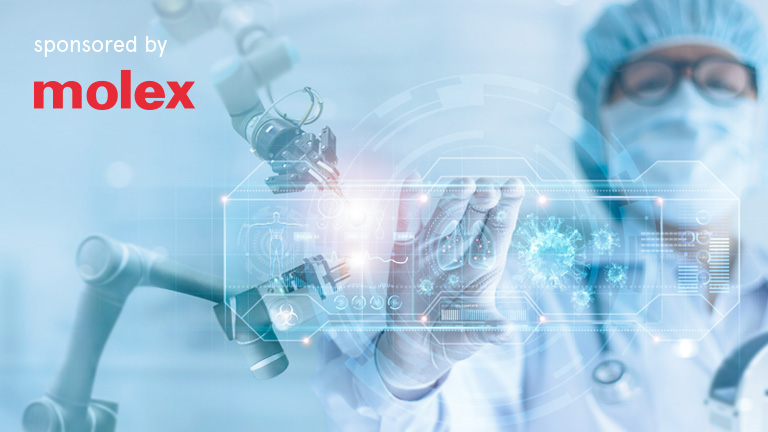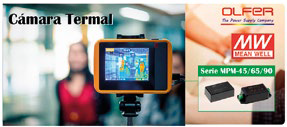Semiconductors form the core of a large number of innovative electronic devices in everyday use. This is especially true in the field of medical technology, which combines advanced sensors with very low consumption (or even without power) and connectivity solutions. These technologies, together with the convenience and the great diffusion of the Internet of Things (Internet-of-Things, IoT) allow a strong boom in the medical sector. Market estimates indicate that growth in medical applications will approach 10% over the next five years, fueled in part by demand for medical imaging and hospital equipment. However, the fastest growing sector is portable devices, including wearable technology and retail solutions such as hearables (wireless headphones). Within a context of an older but more mobile and health-conscious population, the convenience of being able to monitor health in the home and professional environment fosters even greater demand.
Medical market drivers and applications
As medicine advances, new medical tests are developed, often supported by, or indeed enabled by, new equipment. Ultrasound devices and CT scanners make it possible to assess the condition of patients in a non-invasive way, thus reducing risks and costs. When implantation in the patient is necessary, there is a new generation of implantable devices, such as defibrillators and pacemakers, as well as injectable monitors and even swallowable electronic devices that can transmit data or images wirelessly. In the retail segment, exercise tracking devices allow users to better understand basic functions and activity levels, as well as adopt more appropriate lifestyles. Such devices that measure and report clinical data as opposed to activity data continue to emerge on the market to support the monitoring and treatment of a variety of common conditions. At the same time, wireless headsets are evolving into direct access via the Internet or, in retail markets, rapidly replacing legacy headsets and offering unprecedented levels of functionality.
There are many factors that drive the medical market; In most countries, people are living longer and the population is aging more as a result. This is just one factor that has a longer-term influence on conditions such as heart disease, diabetes and asthma, which require regular monitoring of patients. The trend toward supervision outside of hospitals and doctor's offices is due in part to our busy modern lives, which require us to integrate necessary supervision into our work and travel. It is also driven by cost: it is simply less costly for healthcare organizations to have patients self-monitor at home rather than pay hospital medical staff to run tests that patients can do themselves using innovative electronic equipment.
Technology-Driven Medical Solutions
Especially within the renewed and growing portable medical sector, made up of wearables and hearables, successful solutions are offered that are based on combining functionality, portability and low consumption. Wireless communication capability is another key feature as these very small devices do not have the size or power needed to add an interface or touch screen. Short-range technologies like Bluetooth allow medical devices to take advantage of the screens of mobile devices such as smartphones and tablets as interfaces, as well as to receive data and provide the all-important connection to a wider environment through IoT. In recent developments in component technology in general, and semiconductors in particular, these trends have been replicated with increased functionality, reduced size, and less power consumption as important and common features. Although it could be said that the medical sector is promoting these changes, the truth is that the direction is the opposite.
Recent innovation in component and semiconductor technology is enabling the development of medical devices that modern consumers demand and can greatly benefit from. In fact, it is largely the pace of innovation in semiconductors that drives the pace of innovation in medical devices. While wearables and hearables may be small in nature, they are still complete systems that incorporate processing power, memory, peripherals, sensors, and communications, as well as discrete components that are necessary for these systems to function as intended. These small, often underappreciated components often offer circuit protection as well, and are in many ways just as important as more sophisticated devices. ON Semiconductor is an example of a company with a high degree of specialization in components and technologies for portable medical devices, and offers a wide range of products and support services, such as development environments and tools especially aimed at this market, such as System devices. -on- Chip (SoC) that provide efficient and highly integrated solutions in a very compact format. One such product is ON Semiconductor's RSL10 Bluetooth SoC. Offering very low power connectivity, the RSL10 requires only 7mW in receive and idle mode, with a power of just 62,5nW. These values increase the time intervals between charges, even when using a very small battery.
The RSL10 only requires a dozen external components to obtain a complete solution and only occupies 5,50 mm2, thus facilitating the incorporation of medical devices such as hearables. When design requirements demand an even higher degree of miniaturization, devices like the RSL10 can be integrated directly into the ASIC or into SiP (System-in-Package) modules. Internet connectivity through devices such as smartphones and tablets allows the configuration of very small devices such as hearables – using apps, for example – as well as offering the functionality that differentiates them from simple traditional headphones. The RSL10 also allows access to firmware updates over the air (Firmware-Over The Air, FOTA) making it easy to add additional features to devices in the field.
If ensuring that miniature medical devices are energy efficient and well connected is important, it is considered critical to ensure that they cannot be affected by external electrical disturbances, especially for devices such as pacemakers. The risk of malfunction due to electrical interference is increased in portable/wearable devices as they may be used in unknown and ever-changing public environments. In this regard, devices such as multi-channel Transient Surge Suppressors (TSS) play an important role. These miniature devices are adapted to the pacemaker input signal lines and offer up to 10 channels of electrical protection that guarantee the operation of the pacemaker with maximum reliability.
Summary
As the population ages and lives many years, even decades, longer than previous generations, innovative portable medical products or connected wearables gain importance. Medical monitoring adapted to the modern, busy and mobile lifestyle, can offer an increasing level of functionality thanks to extremely small packages and with consumption on the order of milliwatts or even nanowatts. These modern devices need to be able to measure, process and communicate, which poses a challenge for designers to deliver fully integrated systems that only occupy a few square millimeters of printed circuit board surface area. It is critical that these devices are not only reliable, but also offer the functionality and durability that consumers demand. Recent innovations in component technology, particularly in the field of highly integrated, miniaturized, advanced semiconductors, are fueling growth in this booming industry. Simply put, technological advances are turning a device patients need into one they want.








